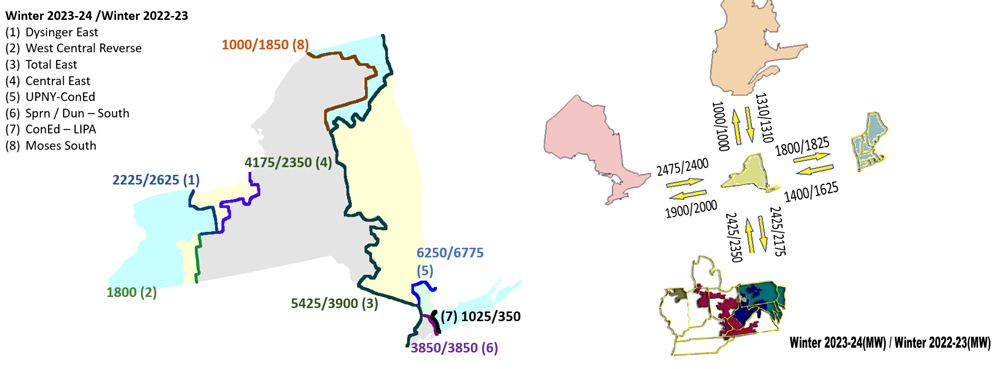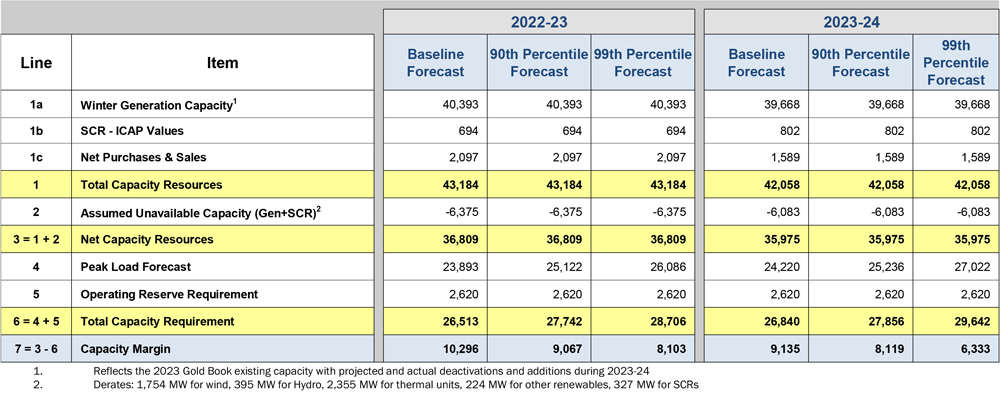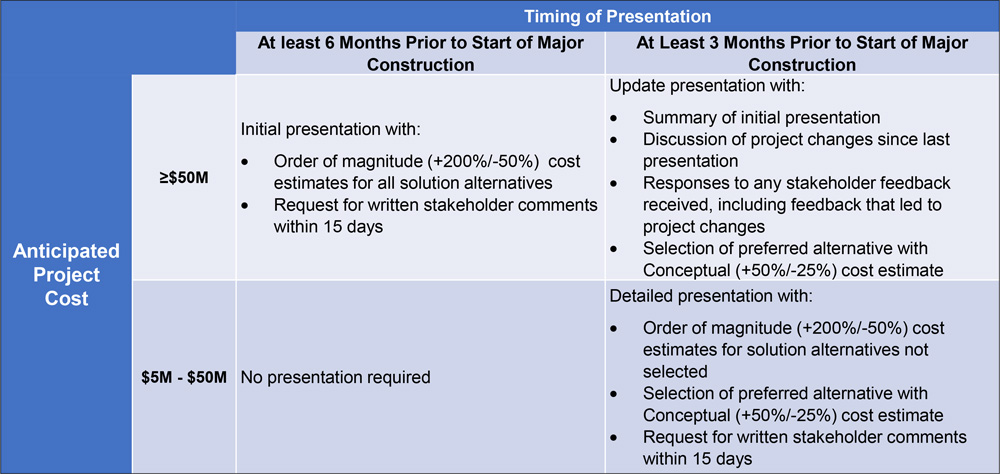Winter Operating Study Report
NYISO’s Operating Committee on Nov. 16 approved the winter 2023/24 operating study report, which found New York’s bulk power system can operate reliably this winter based on calculated transfer capabilities.
The report by the ISO’s Operating Studies Task Force estimates internal and external thermal transfer capabilities for the upcoming winter season based on forecast load and dispatch assumptions, as well as any generation or transmission changes since last year. The external analysis covers NYISO’s adjacent balance areas of ISO-NE, PJM and Ontario’s IESO.
The task force reported an increase in internal thermal transfer limits for the Total East (1,525 MW) and Central East (1,825 MW) interfaces due to Segments A and B of the Alternating Current transmission project, which was designed to increase the deliveries of renewable power to downstate New York.
Changes to external transfer limits also were seen. The ISO-NE-to-NYISO interface saw a decrease of 225 MW due to the reactivation of the Sprainbrook-East Garden City (Y49) 345-kV line. Meanwhile, the NYISO-to-PJM interface increased by 250 MW due to changes in PJM’s dispatch assumptions and the PJM-to-NYISO interface increased by 75 MW due to the redistribution of flows from the Segment A and B project.
NYISO reported that 639 MW of fossil-fuel based generating capacity was deactivated and that 336 MW of renewable generation was added since last year’s study. The appendices are posted online.
Winter Capacity Assessment
Aaron Markham, NYISO vice president of operations, informed the OC that while NYISO expects sufficient capacity for 50/50 peak forecast winter conditions, there is a risk of shortfalls during extreme weather events if non-firm fuel resources become unavailable.
The assessment projects winter generation capacity of 39,668 MW, approximately 750 MW lower than last year’s assessment, due primarily to the retirement of peaker units.
“Over the last approximately five years, we’ve seen about a 2,400-MW reduction in the margin as a result of retirements,” Markham said. “Continued reductions in winter capacity, disruptions in fuel supply or other concerns might result in operational challenges, especially during extreme cold weather events.”
Projected winter capacity margins for normal and extreme weather conditions with only firm fuel resources available:
-
- 2,641-MW surplus capacity margin for 50-50 peak forecast conditions
- -161-MW deficit capacity margin for 99-1 peak forecast conditions
Projected winter capacity margins for normal and extreme weather conditions with non-firm fuel available:
-
- 9,135-MW capacity margin for 50-50 peak forecast conditions
- 6,333-MW capacity margin for 99-1 peak forecast conditions
Projected firm fuel generation potentially unavailable at high load or temperature conditions (NYISO 2023 Gold Book, Table I-20):
-
- 114 MW lost for 90-10 daily average temperature (5 F)
- 707 MW lost for 99-1 daily average temperature (-2 F)
- 707 MW lost for 90-10 daily minimum temperature (0 F)
- 3,441 MW Lost for 99-1 daily minimum temperature (-8 F)
Markham said NYISO will continue monitoring winter conditions and communicate any emergencies to stakeholders. The ISO is continuing to review the 11 recommendations from the FERC and NERC joint inquiry into the electric outages caused by Winter Storm Elliott. (See Déjà Vu as FERC, NERC Issue Recommendations over Holiday Outages.)
Matt Cinadr, a power systems operations specialist with The E Cubed Co., revisited a stakeholder concern regarding the treatment of special case resources by NYISO, saying the assessment’s findings highlight that these resources should not be overlooked. (See Providers See ‘Mixed Signals’ on Demand Response in NYISO.) “I don’t think anything should be done to push SCRs further out of the market,” he said, “there is value in the [802 MW of SCRs] being shown in your assessment.”
OC Election
The OC elected James Kane, senior energy market adviser with the New York Power Authority, as the committee’s new vice chair. Kane co-chaired the Electric System Planning Working Group in 2021.
October Operations
Markham also told the OC that October’s load peaked at 21,735 MW on Oct. 4, recorded its minimum load of 11,890 MW on Oct. 8, and added 73 MW of behind-the-meter solar since the previous month.
He added that the Oct. 14 annual solar eclipse had a minor impact on BTM production, affecting only 100 MW, significantly less than the anticipated 700 MW. (See “Eclipse Preparation,” NYISO Business Issues Committee Briefs: Sept. 14, 2023.)


